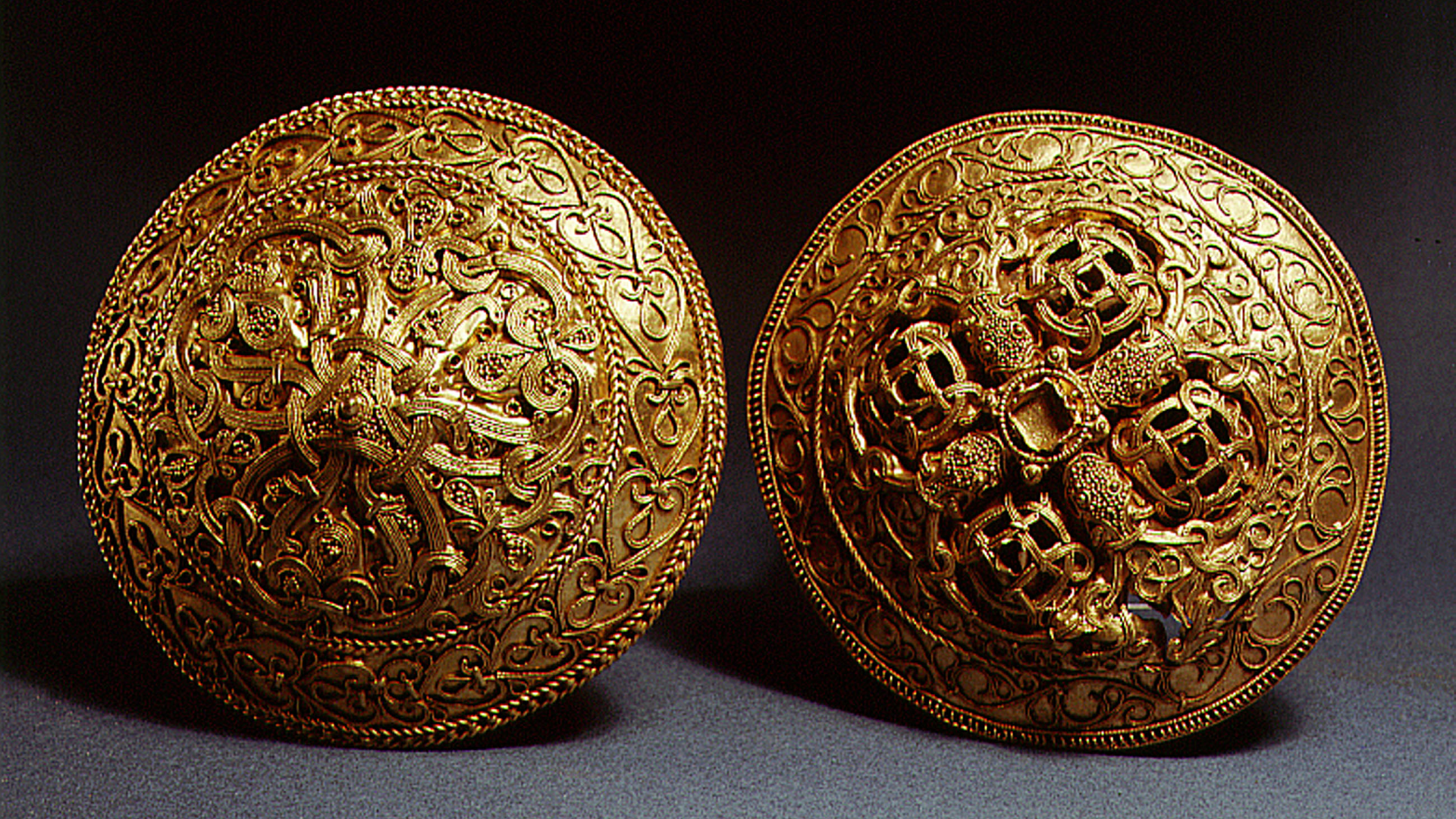Hornelund Brooches: Viking age gold ornaments mysteriously buried in Denmark 1,000 years ago
Two brooches from Denmark are unique examples of Viking Age goldwork that includes Christian and Norse designs.

Name: Hornelund Brooches
What it is: Two gold clothing brooches
Where it is from: Varde, southwestern Jutland (Denmark)
When it was made: Early 11th century
These two brooches were part of a small hoard discovered along with a gold arm ring in southwestern Jutland, Denmark. Dated to the Viking Age (A.D. 793 to 1066), the brooches are decorated with ornamental wire bent into delicate shapes.
Each gold brooch measures about 3.3 inches (8.5 centimeters) in diameter and weighs between 2.1 to 2.6 ounces (60 to 75 grams), according to a 1994 study by Lene Frandsen, curator at the Varde Museum. The designs on the brooches include examples of both Norse and Christian art, according to the National Museum of Denmark, where the accessories are on display.
One brooch includes four forward-facing animal heads in a Norse style, suggesting it was made locally by a Danish or Viking goldsmith. The other brooch has leaves and vines that may connect to Christianity, as grapevines were used in early Christian art to represent Jesus as the "true vine of life" and the idea of the resurrection.
During the Viking age, Jutland was an advanced center of goldsmithing. Still, the Hornelund brooches are "completely unique in the Danish jewelry collection," archaeologist Władyslaw Duczko wrote in a 1987 study. Some may have been made for export, as several similar brooches have been discovered in Sweden. And it's possible that the Jutland goldsmiths got their decoration ideas from jewelers in Slavic countries like Estonia, Duczko wrote, where similar swirling patterns have been found on accessories dated to the late 10th century.
Related: Meskalamdug's Helmet: One of the world's oldest helmets depicts a Mesopotamian prince's man bun
The Hornelund brooches, however, are somewhat mysterious even today. They were recovered by a servant tilling his landlord's field in 1892. Historical records show that the landowner turned the hoard over to the National Museum of Denmark and was paid 295 Danish krone — worth about $4,000 USD today.
But the farm was not archaeologically investigated at the time, and recent excavations there have yielded no new information on the hoard, according to Frandsen. So experts do not yet know if the jewelry came from a grave, a homestead or a hastily buried cache of wealth. They hope that one day excavations will yield more clues to the meaning of the Hornelund hoard.
Get the world’s most fascinating discoveries delivered straight to your inbox.

Kristina Killgrove is a staff writer at Live Science with a focus on archaeology and paleoanthropology news. Her articles have also appeared in venues such as Forbes, Smithsonian, and Mental Floss. Kristina holds a Ph.D. in biological anthropology and an M.A. in classical archaeology from the University of North Carolina, as well as a B.A. in Latin from the University of Virginia, and she was formerly a university professor and researcher. She has received awards from the Society for American Archaeology and the American Anthropological Association for her science writing.
You must confirm your public display name before commenting
Please logout and then login again, you will then be prompted to enter your display name.


